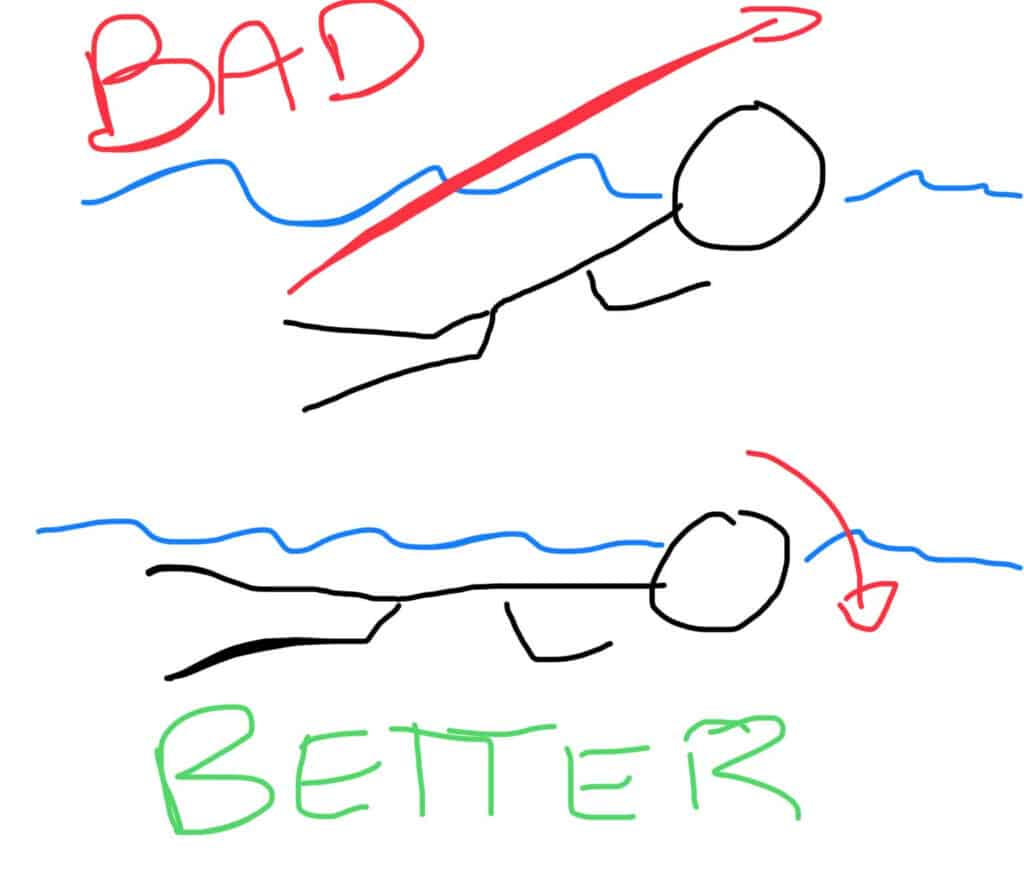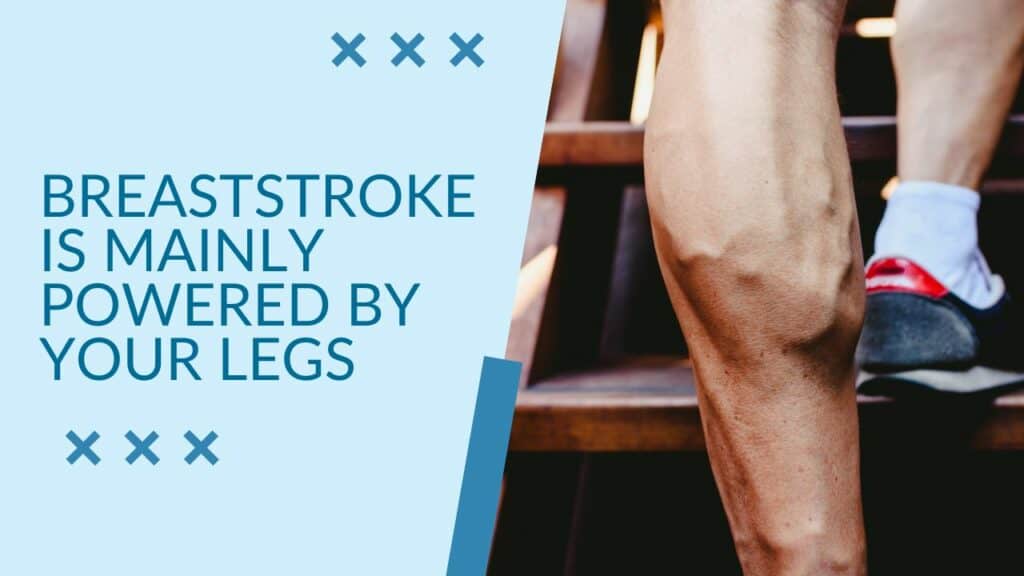Breaststroke is one of the most challenging swimming strokes to master. It requires precise timing, coordination, and strength to execute properly.
But what if I told you that you could swim breaststroke without getting tired?
Yes, it’s possible!
As a former high school swimmer and lifelong swimming enthusiast, I’ve learned a few tips and tricks over the years that have helped me swim breaststroke with ease.
In this article, I’ll share my secrets with you.
From proper body positioning and building endurance to fine-tuning your technique and incorporating breaststroke into your training, I’ll provide practical advice on how to swim breaststroke without getting tired.
Whether you’re a beginner or an experienced swimmer looking to improve your breaststroke, this article is for you.
So, let’s “dive in” and unlock the secrets of effortless breaststroke!
Table of Contents
- Understanding the Basics of Breaststroke
- Reason 1: Improper Body and Head Positioning
- Reason 2: Bad Stroke Technique/Inefficient Arm and Leg Movements
- Reason 3: Lack of Endurance
- Reason 4: Lack of Strength
- Conclusion
Please do not confuse my personal blog for medical advice. Please consult with a healthcare professional before starting or altering any training plan. This post may contain affiliate links. If you make a purchase after clicking on a link, I get a small percentage of the sale at no additional cost to you.
Understanding the Basics of Breaststroke
Before we jump into how to swim breaststroke without getting tired, let’s cover some basics.
Breaststroke is a stroke that involves a sequence of arm and leg movements, as well as breathing, to move through the water. To swim breaststroke, you begin in a prone position with your arms extended in front of you and your legs straight behind you.
Next, you pull your arms down and back towards your chest, while bringing your legs up towards your buttocks.
After that, you kick your legs out and apart, while simultaneously pushing your arms forward and together.
Finally, you glide for a moment before repeating the cycle.
Timing and coordination are key to executing the breaststroke properly, and a small mistake can greatly reduce your efficiency in the water.
Common mistakes include lifting your head too high, which can cause your hips and legs to sink, or not fully extending your arms, which can create resistance and slow you down.
In the next section, we’ll discuss proper body positioning in the water for breaststroke, which is crucial for reducing drag and conserving energy.
Reason 1: Improper Body and Head Positioning
I know that getting tired while swimming breaststroke can be frustrating.
One common reason for this is improper body and head positioning in the water. When your body and head are not positioned correctly, it can create unnecessary resistance and drag, making it harder to swim efficiently and tire you out faster.
Here’s what you need to know to fix it:
- Body Positioning: Proper body positioning is key to swimming breaststroke with ease. Keep your body in a straight line from head to toe, with your hips and shoulders parallel to the surface of the water. Avoid lifting your head too high, which can cause your hips and legs to sink, and maintain a narrow kick to reduce resistance and conserve energy.
One tip I’ve found helpful is to imagine a string running through the middle of your body, pulling you straight through the water. This can help you maintain a streamlined position and reduce drag, allowing you to swim with more ease and efficiency.

- Head Positioning: Your head position is just as important as your body positioning when it comes to swimming breaststroke. Keep your head facing down, with your eyes looking at the bottom of the pool. Avoid lifting your head too high, as this can disrupt your streamline and create unnecessary resistance.
One thing that’s helped me with my head positioning is to focus on pushing my head under water. This can help you maintain a neutral head position and reduce drag in the water, allowing you to swim with less effort and more speed.
By focusing on proper body and head positioning, you can improve your streamline and reduce drag in the water, allowing you to swim breaststroke with more ease and efficiency.
Reason 2: Bad Stroke Technique/Inefficient Arm and Leg Movements
Another possible reason you are getting tired is because you have inefficient arm and leg movements. Proper timing of your arm and leg movements is essential to swim breaststroke with ease and efficiency. The best way to improve your technique is working with a swim coach. Here’s a few tips I’ve learned from working with swim coaches over my swimming career.
When doing breaststroke, try to time your arm action and leg kick so that there is always something moving you through the water.
You should try to time your stroke so that your arms move you while your legs are in the recovery stage of the stroke. Likewise, your kick should propel you while your hands recover. This helps you maintain a continuous movement through the water, reducing drag and conserving energy.
Unlike freestyle, the breaststroke is mainly powered by your legs. To do this kick correctly, keep your knees close to hip-width apart and facing towards the bottom of the pool. Turn your feet outwards as you sweep them out and backwards in a circular motion. This helps to increase your propulsion and improve your streamline.

When recovering your legs, bring your heels towards your butt. I try to think about moving my feet to my butt rather than moving my knees closer to my chest.
By focusing on proper timing of your arm and leg movements and efficient leg movements, you can reduce drag in the water and conserve energy, making it easier to swim breaststroke without getting tired.
Reason 3: Lack of Endurance
Are you finding yourself getting tired while swimming breaststroke, even if your technique is good? It’s possible that you simply lack the endurance to keep going. Building up your endurance is essential if you want to swim longer and stronger. Here’s how to do it:
- Practice Makes Perfect: The more you swim breaststroke, the better your endurance will become. Start with shorter distances and gradually increase the distance as you get more comfortable. Set yourself goals and track your progress to see how far you’ve come.
- Mix It Up: Try mixing up your swim workouts to challenge yourself and build up your endurance. Incorporate different strokes, drills, and intervals to keep your body guessing and prevent boredom. You can also try using different equipment, such as pull buoys or paddles, to add resistance and increase your endurance.
- Consistency is Key: To build up your endurance, it’s important to swim on a regular basis. Aim to swim at least 2-3 times per week, and gradually increase the amount of time you spend in the water. Remember to rest and recover between workouts to prevent burnout and injury.
One great way to build endurance is through interval workouts. Here are some intervals workouts you can try to help you swim faster.
Interval Workouts to Improve Your Breaststroke Endurance
Adding interval workouts to your training routine can significantly improve your cardiovascular fitness, not to mention improve your breaststroke endurance and efficiency. Here are some breaststroke interval workouts that you can incorporate into your training:
The Pyramid Workout:
This workout involves gradually increasing and then decreasing the distance you swim breaststroke during each interval. It helps to build endurance and improve pacing.
- 1 x 50m breaststroke (easy pace, focusing on technique)
- 1 x 100m breaststroke (moderate pace)
- 1 x 150m breaststroke (moderate to fast pace)
- 1 x 100m breaststroke (moderate pace)
- 1 x 50m breaststroke (easy pace, focusing on technique)
Rest for 15-30 seconds between each interval.
Descending Ladder Workout:
This workout involves swimming multiple intervals of breaststroke, with each interval decreasing in distance. It helps to build endurance and improve your speed and pacing.
- 1 x 200m breaststroke (easy to moderate pace)
- 1 x 150m breaststroke (moderate pace)
- 1 x 100m breaststroke (moderate to fast pace)
- 1 x 50m breaststroke (fast pace)
Rest for 20-30 seconds between each interval.
Broken 200s Workout:
This workout involves swimming 200 meters of breaststroke, broken up into shorter intervals with short rest periods in between. It helps to build endurance and improve your speed and pacing.
- 4 x 50m breaststroke (fast pace), rest for 10 seconds between each 50m
- Rest for 1 minute
- Repeat 2-3 times
- Mixed Stroke Intervals:
This workout involves swimming intervals of breaststroke, mixed with intervals of another stroke (such as freestyle or backstroke). It helps to build endurance and improve your overall swimming fitness.
- 1 x 100m breaststroke (moderate to fast pace)
- 1 x 100m freestyle or backstroke (easy pace)
- 1 x 100m breaststroke (moderate to fast pace)
- 1 x 100m freestyle or backstroke (easy pace)
- 1 x 100m breaststroke (moderate to fast pace)
Rest for 15-30 seconds between each interval.
Incorporating these breaststroke interval workouts into your training routine can help you build endurance, improve your technique, and swim breaststroke without getting tired.
Reason 4: Lack of Strength
Swimming breaststroke requires strength in your arms, legs, and core to maintain proper form and power through the water. If you find yourself getting tired while swimming breaststroke, it could be due to a lack of strength. Here’s how to fix it:
- For arm strength, try exercises such as dumbbell curls, triceps extensions, and push-ups. These exercises help build upper body strength, which is essential for powering through the water during the arm pull phase of breaststroke.
- For leg strength, try exercises such as squats, lunges, and calf raises. These exercises help build lower body strength, which is essential for generating an explosive breaststroke kick.
- For core strength, try exercises such as planks, Russian twists, and bicycle crunches. These exercises help build core strength, which is essential for maintaining proper form and balance while swimming breaststroke.
Consistency is Key: Just like building up your endurance, building up your strength requires consistency. Incorporate strength training exercises into your workout routine at least 2-3 times per week, and gradually increase the intensity and duration of your workouts.
Conclusion
In this post, I’ve shared with you the common reasons why swimmers get tired while swimming breaststroke and how to fix them. Whether it’s due to improper body positioning, inefficient arm and leg movements, lack of endurance, or lack of strength, there are steps you can take to improve your technique and swim breaststroke with more ease and efficiency.
To recap, here are the key takeaways from this post:
- Proper body and head positioning are essential for reducing drag and conserving energy while swimming breaststroke.
- Efficient arm and leg movements, including proper timing and technique, can help reduce resistance in the water and improve your streamline.
- Building up your endurance through consistent practice and mixing up your swim workouts can help you swim longer and stronger.
- Targeted strength training exercises for your arms, legs, and core can help you build the strength you need to power through the water.
I’ve learned that practice makes perfect. While breaststroke is my weakest stroke, I’ve worked hard to improve by working on my form.
I hope these tips have been helpful to you, and I hope you’re able to improve your breaststroke technique!

About the author
Hi! I’m Sam. And I’m a nerd. Swimming Nerd. Gear Nerd. Triathlon Nerd. I swam in high school and have even done a few sprint and Olympic distance triathlons. I’m excited to share my love of swimming with you through this site!

